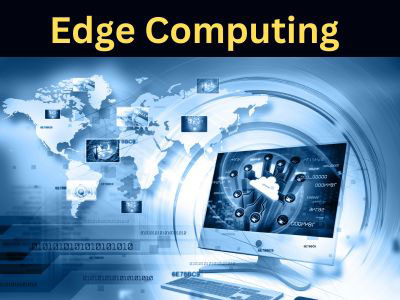Key Takeaway
Yes, edge computing is growing rapidly. Businesses are adopting it to improve performance, reduce latency, and handle real-time data processing. The rise of IoT devices and 5G networks is driving this growth further.
With applications in healthcare, manufacturing, retail, and more, edge computing has become a key technology trend. Its ability to process data locally makes it crucial for industries looking to optimize operations.
Recent Trends in Edge Computing Adoption
The adoption of edge computing has seen significant momentum in recent years, driven by advancements in IoT, AI, and 5G technologies. Industries that heavily rely on real-time data and low-latency processing are increasingly turning to edge computing to overcome the limitations of traditional cloud computing. The ability to process data locally, closer to where it is generated, has proven to be a game-changer, especially in industries like manufacturing, healthcare, and transportation.
One of the most notable trends is the integration of edge computing with 5G networks. The high-speed, low-latency nature of 5G complements edge computing by enabling faster data transmission and real-time decision-making at the edge. Another trend is the growing focus on security and privacy concerns, which has led to the development of more secure and compliant edge computing solutions. Additionally, as more organizations embrace hybrid cloud environments, edge computing is being used to extend cloud capabilities to remote locations, providing a seamless experience for businesses. This rise in edge computing adoption is set to continue as more industries realize its potential to drive efficiency, reduce operational costs, and improve customer experiences.

Key Industries Driving Edge Computing Growth
Certain industries are leading the charge in adopting edge computing, leveraging its ability to deliver faster processing and real-time insights. Manufacturing, with its need for predictive maintenance and automated quality control, is a prime example. Smart factories utilize edge computing to process data locally, ensuring quick responses to machine issues.
In healthcare, wearable devices and diagnostic tools rely on edge computing to provide real-time patient monitoring. Similarly, the retail sector uses edge devices for inventory management and personalized customer experiences.
As an engineer, focusing on these industries can open up career opportunities. Edge computing’s versatility ensures that its adoption will only grow, making it a vital area to specialize in.
You May Like to Read
Technological Innovations Accelerating Edge Expansion
Technological advancements are fueling the rapid adoption of edge computing. One key innovation is the development of lightweight AI models capable of running on edge devices. These models enable complex tasks such as image recognition and natural language processing without relying on cloud infrastructure.
5G technology is another significant driver. Its high-speed, low-latency connectivity enhances the performance of edge devices, especially in applications like autonomous vehicles and smart factories. Coupled with advancements in hardware, such as energy-efficient processors and high-capacity storage, edge devices are becoming more powerful and versatile.
Additionally, software innovations like containerization and microservices architecture simplify the deployment and management of applications on edge devices. These technologies ensure that edge computing systems remain adaptable and scalable, catering to evolving industry needs.
Role of 5G and IoT in Boosting Edge Popularity
The rollout of 5G networks has significantly enhanced the potential of edge computing. With ultra-low latency and faster data transfer speeds, 5G enables seamless edge device communication and real-time application performance.
IoT devices generate vast amounts of data that require immediate processing, and edge computing addresses this need effectively. Together, 5G and IoT are fueling the adoption of edge computing in areas like autonomous vehicles, smart factories, and connected healthcare, ensuring faster and more reliable systems.
Challenges Impacting the Growth of Edge Computing
Despite its advantages, edge computing faces several challenges. High deployment and maintenance costs can be a barrier for smaller businesses. Limited computational resources at the edge compared to centralized cloud systems restrict the complexity of tasks that can be performed locally.
Interoperability issues between edge devices and platforms also pose a challenge, hindering seamless integration. Additionally, data security remains a concern, as edge systems often operate in less-controlled environments. Addressing these challenges is crucial for ensuring sustained growth and adoption.
Conclusion
Edge computing is undeniably growing, driven by advancements in technology, the rise of IoT, and the demand for low-latency solutions. With significant contributions from industries like healthcare, manufacturing, and automotive, and the support of 5G and AI, edge computing is set to revolutionize data processing.
While challenges remain, ongoing innovations and investments will likely overcome these hurdles, ensuring edge computing continues its rapid expansion and becomes a cornerstone of digital transformation.
